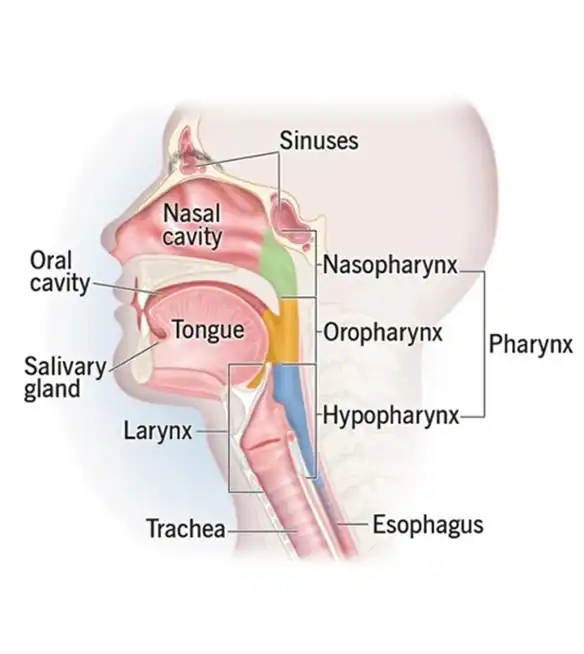Here is our comprehensive resource for head and neck cancer treatment and throat cancer. At Sunrise Oncology Centre, we understand the complexities and challenges associated with head, neck and throat cancers. Our dedicated team of specialists is committed to providing cutting-edge care and personalized treatment plans tailored to each individual's unique needs. As leaders in head and neck cancer treatment and with the best throat cancer treatment centers, we offer a multidisciplinary approach that integrates the latest advancements in medical technology with compassionate support services. With state-of-the-art facilities and advanced therapies, our throat cancer treatment centers are equipped to address the diverse needs of patients. Whether you're seeking information, diagnosis, or treatment options, you can trust our expertise and commitment to guiding you through every step of your journey toward healing and recovery.

Tumors like these can begin in the glands that line the mouth and throat. Minor salivary gland tumors can take many different forms, such as adenoid cystic carcinoma, mucoepidermoid carcinoma, and polymorphous low-grade adenocarcinoma.
Lymphoid tissue, which is where immune system tumors known as lymphomas can begin, is found in the tonsils and the base of the tongue.
Certain tissue changes that are visible in the mouth or throat are referred to as leukoplakia and erythroplakia. When scraped, leukoplakia is a white or gray patch that does not come off.
A crimson, flat or slightly elevated spot called an erythroplakia typically bleeds easily if scratched. A patch called erythroleukoplakia has both white and red components.
Leukoplakia and erythroplakia are most frequently set on by smoking and chewing tobacco. These can also be brought on by poorly fitting dentures that press against the tongue or the inside of the cheeks.
The most typical kind of salivary gland cancer is mucoepidermoid carcinoma. In the parotid glands, most begin. They less frequently appear in the minor salivary glands inside the mouth or the submandibular glands. Although they occasionally have intermediate or high grades, these malignancies are mostly low grade.
The second most prevalent salivary gland cancer is adenoid cystic carcinoma, which is typically slow-growing and seems to be low grade when examined in a laboratory setting. Even yet, because it prefers to travel via nerves, it can be exceedingly difficult to totally eradicate. After therapy (often surgery and radiation), these cancers frequently recur, sometimes years later. If the tumor is smaller, the prognosis is better.